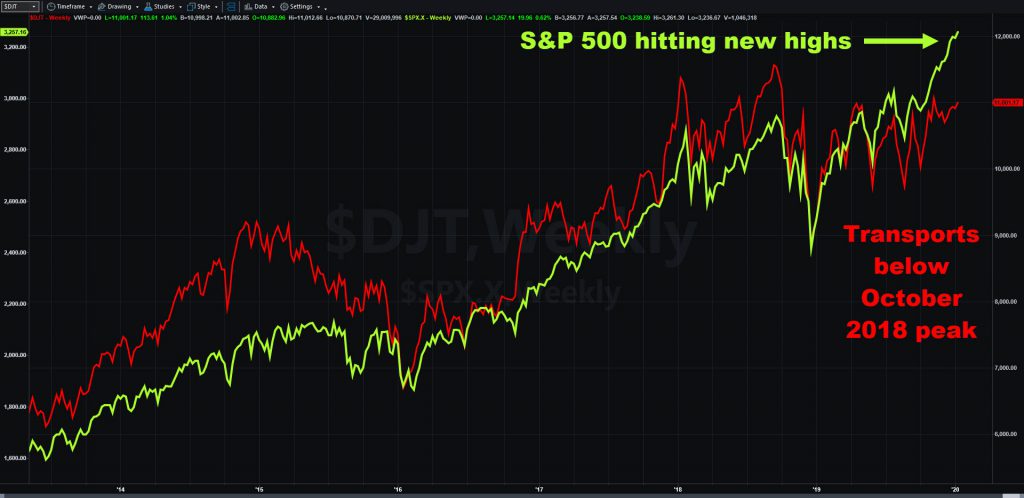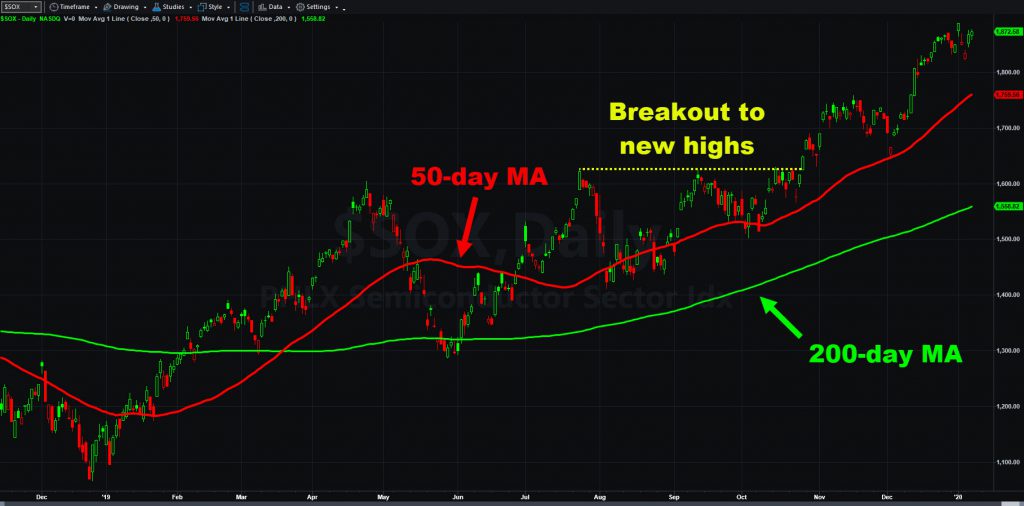Something weird is happening in the market: Transportation stocks are dead in the water as almost everything else rallies.
This pattern runs contrary to “Dow Theory,” one of the most cherished concepts in the history of investing.
Created by journalist Charles Dow in the late 1800s, Dow Theory views railroads, airlines and shippers as economic indicators. Gains in those mean the business cycle is healthy, “confirming” strength in other parts of the market.
Ideally, Dow Theory prevents investors from chasing a bull market on its last legs. If transports haven’t broken out, other stocks will roll over soon enough. In recent months, it’s failed miserably. Why?

Transports Have Their Own Issues Now
Dow Theory hasn’t worked lately because transportation stocks have their own unique problems.
Coal is the first item. It’s been one of the railroads’ biggest commodities since the 1800s, but now it’s dying. Last year coal volumes fell 9.2 percent, according to an industry group.
Even without the collapse of coal, rail traffic was down 2.8 percent. But that followed a very strong 2018, stimulated by tax cuts the previous year. Not great, but also explainable.
Next, airlines. Problems with Boeing’s (BA) 737 MAX have raised maintenance costs and congested operations. Investors also seem to doubt the industry’s ability to keep raising ticket prices. There’s additional risk of higher costs for fuel and labor. Throw in heavy debt loads, and it’s not the greatest combination.
Legacy delivery companies FedEx (FDX) and United Parcel Service (UPS) have also weighed on the Dow Jones Transportation Average ($DJT). Both are struggling to adapt to a world with fewer paper documents and more competition. FDX also has deeper issues.
What Charles Dow Might Think Today
To be fair to Charles Dow, he lived over a century ago. People didn’t even have telephones yet and typewriters (not the electric kind) were the equivalent of iPhones. His basic notion that certain sectors provide a clue on the bigger stock market still makes sense. Maybe we just need to reconsider which industries matter.

If Dow were alive today, he’d probably focus on semiconductors. Microchips are used in more devices all the time — not just smart phones and computers, but also cars, machinery and appliances. In the 1800s, railroads were key to most parts of the economy. Today, it’s chips.
A modern-day Charles Dow would probably also use financials like Bank of America (BAC) and payment stocks like Mastercard (MA). Those sectors are completely intertwined in the business cycle and confidence.
Finally, he’d probably look at a company like Alphabet (GOOGL), the parent of Google. The search giant stands at the center of the modern economy in a way 19th century railroads never dreamed of.
All those areas — chips, banks, credit cards and Internet — hit new 52-week highs since the S&P 500 broke out in October. $DJT hasn’t done that in more than a year.
In conclusion, the old link between transports and the broader market makes a lot of sense. But like all indicators, it simply needs to evolve as times change.






















